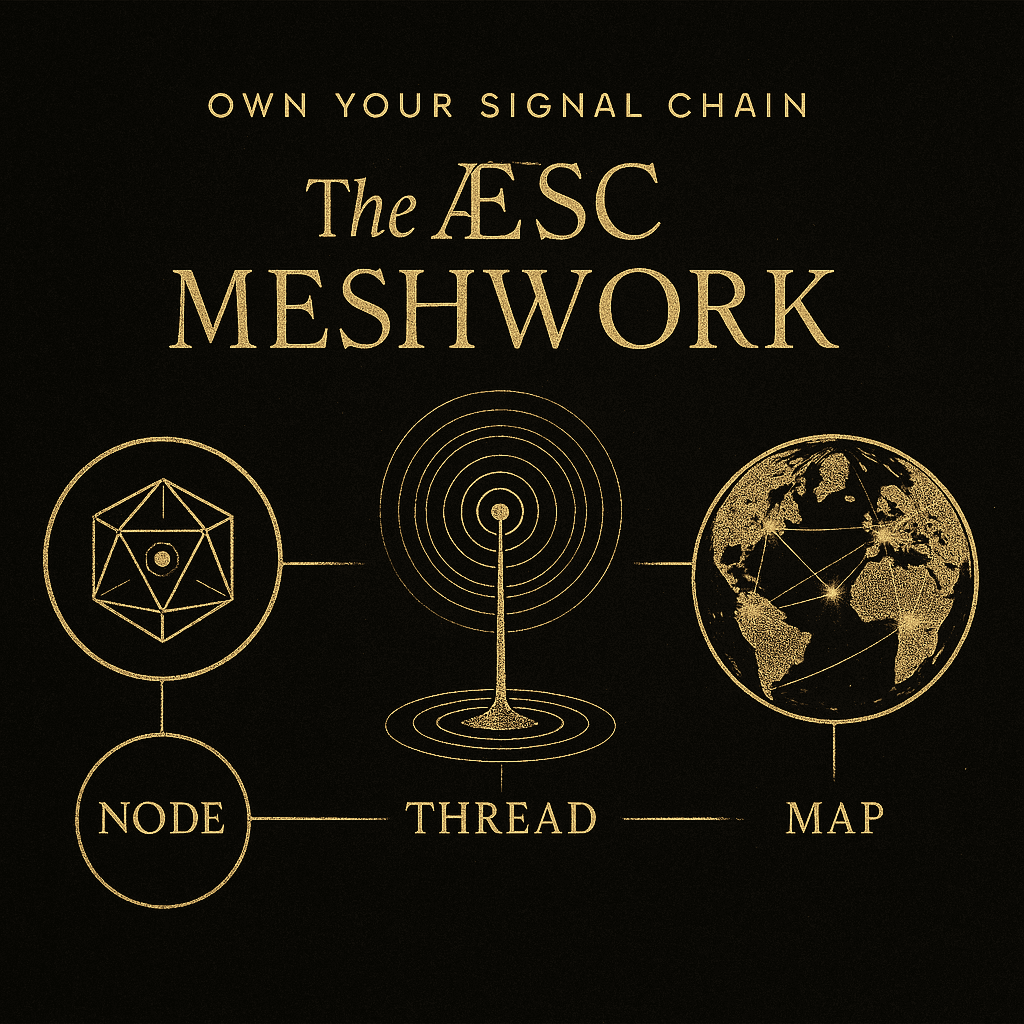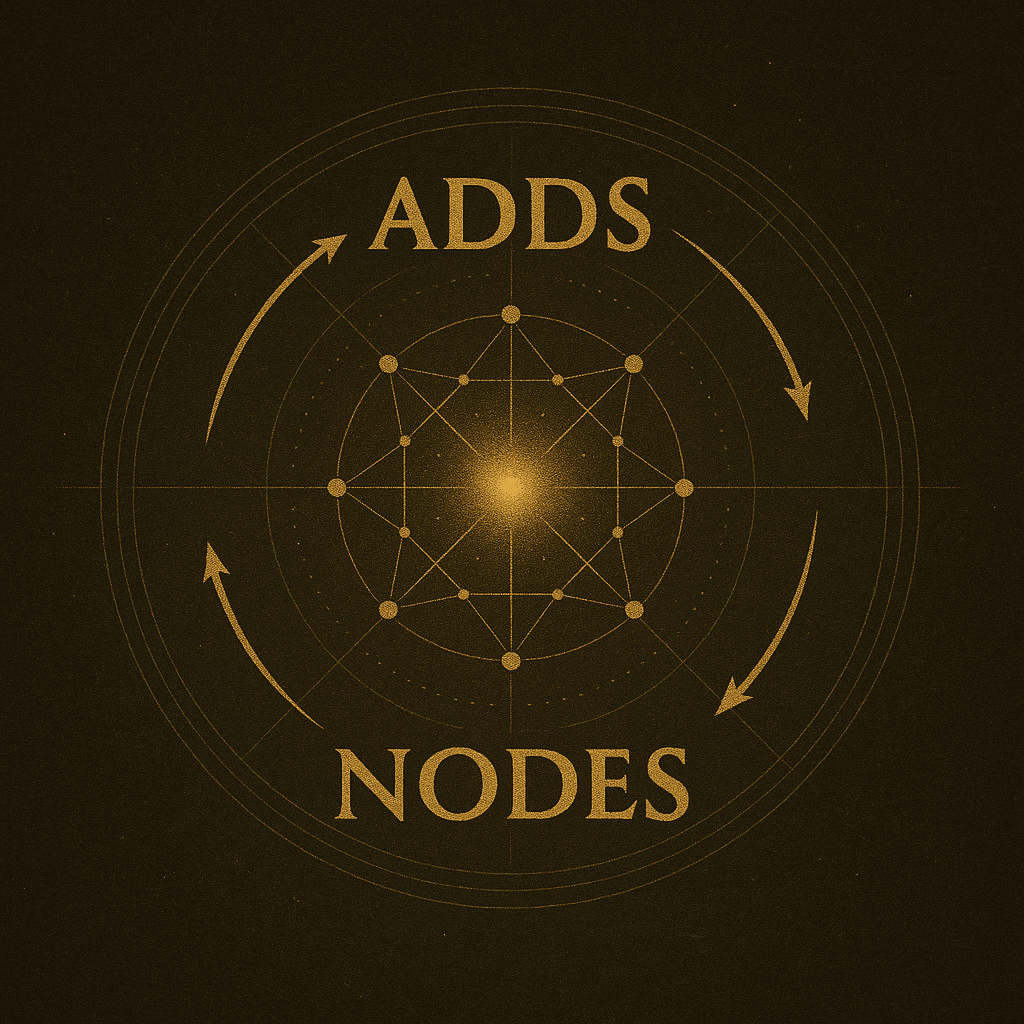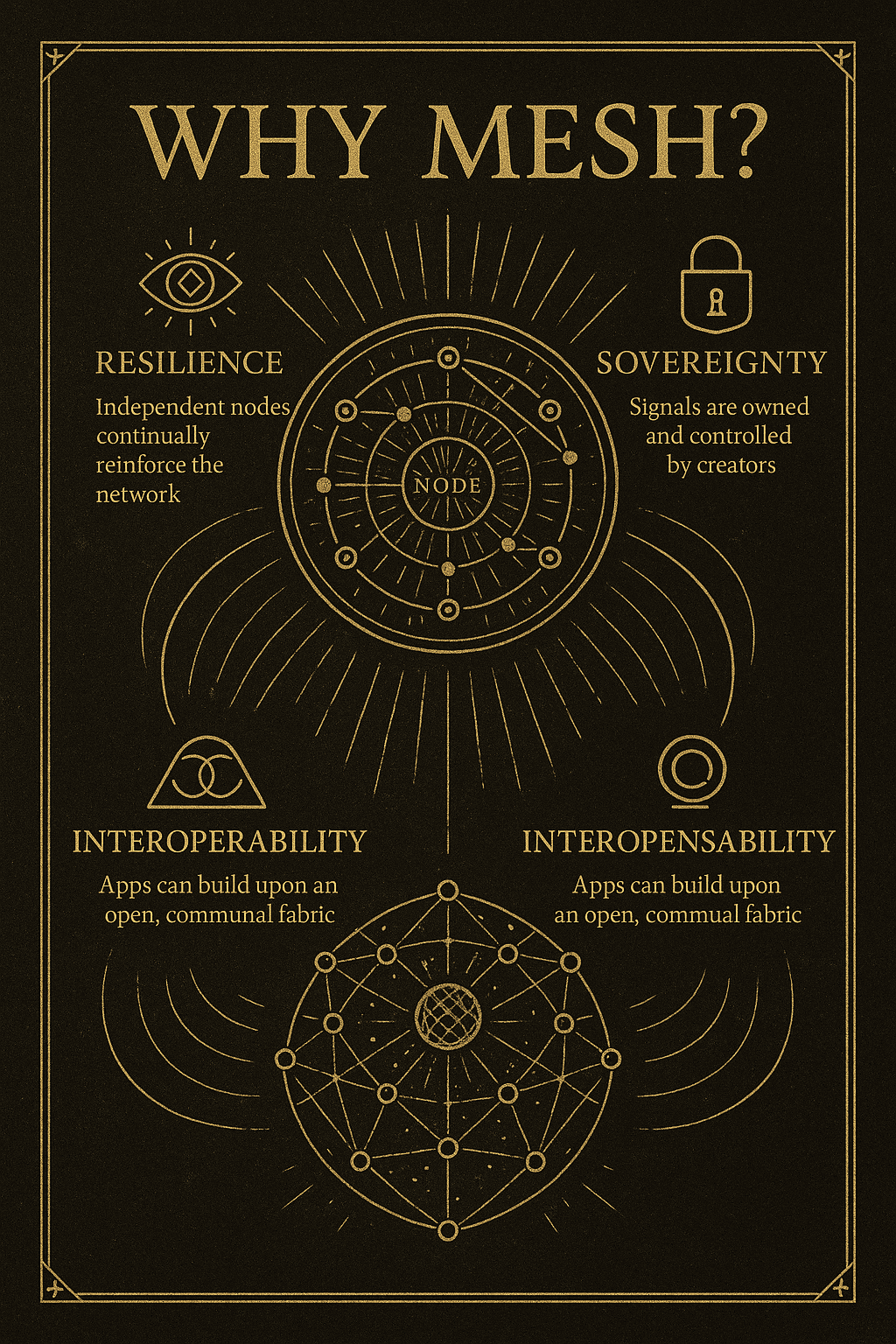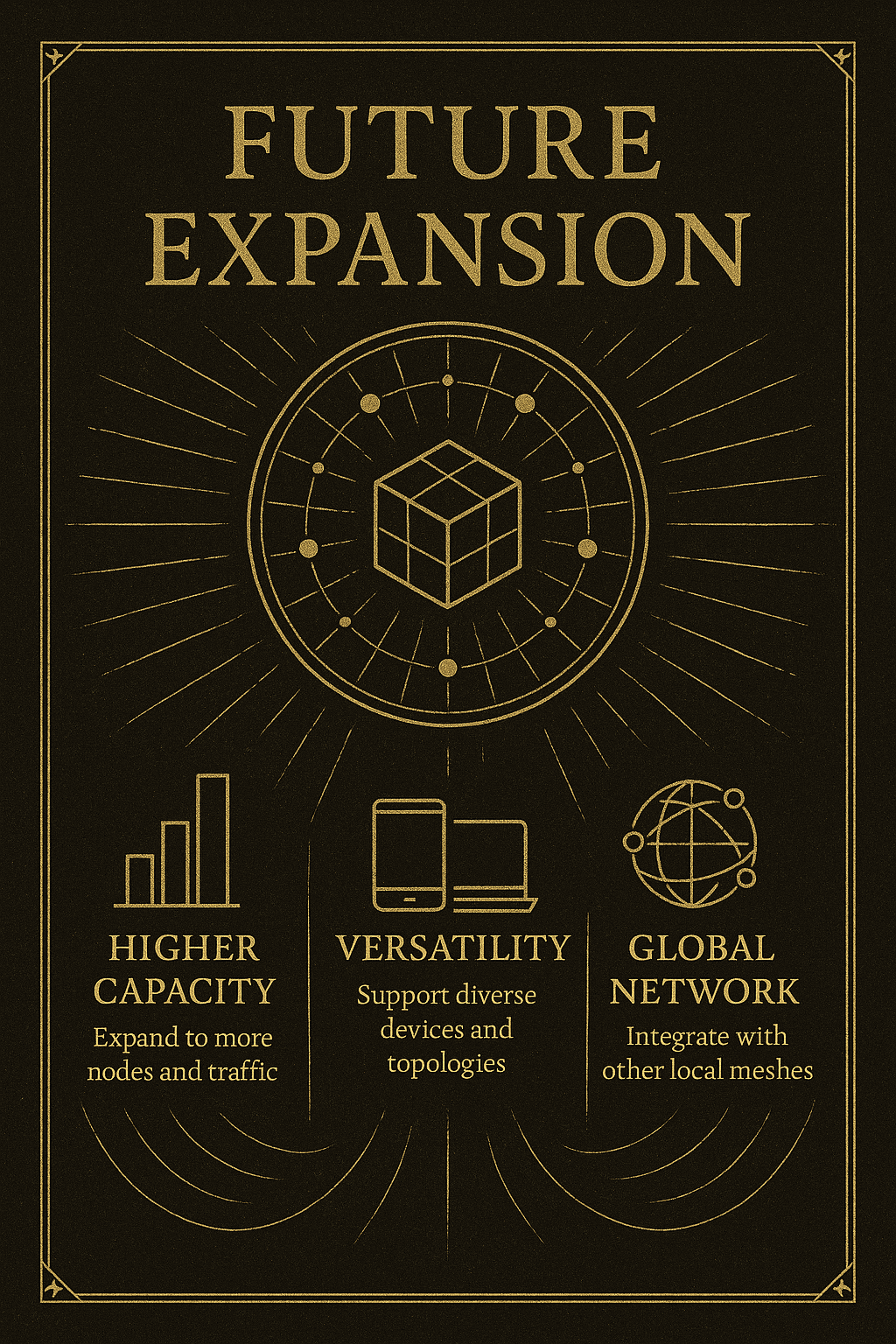
You're Signal Awaits
Create your genesis, sign your first Signal.
Start Here — 3-Step Signal Wizard
We’ll help you create a Node ID, sign your first Signal (Genesis), and see it on the live map.
Start Here — 3-Step Signal Wizard
We’ll help you create a Node ID, sign your first Signal (Genesis), and see it on the live map.
Any stable string works. You can register this on-chain later via NodeRegistry.
A Signal proves your node is active now. It includes Node ID, timestamp, and a random nonce, signed with your secret so others can trust it. The first Signal is Genesis. You can attach a DePin tag later (kept in stickerId).
Signal Lifecycle
A Signal includes your Node ID, a timestamp, and a random nonce—signed with your secret (HMAC-SHA256). The network verifies freshness and signature before updating public state.

See it Grow
Each validated Signal strengthens the mesh—fueling stats, coordination, audits, and AEverse rituals.

Why it Matters
Verified Signals create tamper-resistant proof of activity—enabling transparent stats, rewards, and governance over time.

What’s Next
Meshwork is digital-first today. DePin and IRL nodes merge next—bringing physical presence into the same invariant fabric.




